|
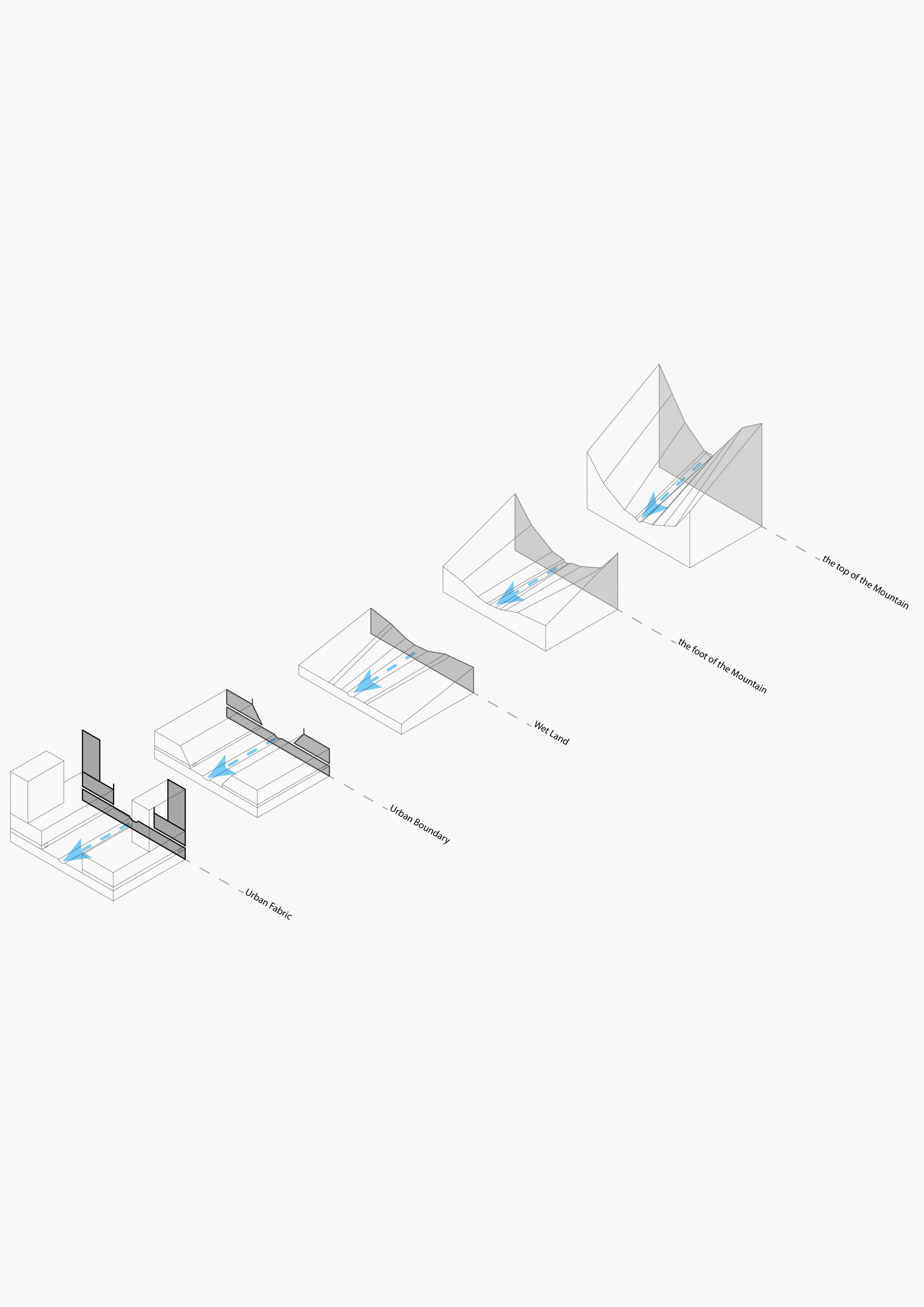 Drainage system sectional study Drainage system sectional study
In the past, the drainage channel always brings negative impacts toward the community. However in the present, with advance technologies and innovative ideas, waste water no longer disturb our life; space no longer just for drainage purpose, but it can bring the community together.
New age, new strategies, new technologies. Waste water can be recycle, enhance the community, and connect the city, creates extra buffer zone between communities; become an integration of the nature and the city.
WHY?
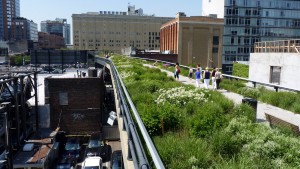 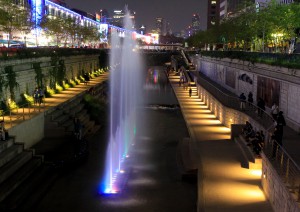
In the past, the drainage channel always brings negative impacts toward the community. However in the present, with advance technologies and innovative ideas, waste water no longer disturb our life; space no longer just for drainage purpose, but it can bring the community together.
History of the thesis subject: the topic of redefining and readopting existing drainage channel only starts appearing in the recent decade; the Cheonggyecheon Stream is consider as one of the earliest project that adopted this concept in the beginning of 2000s. It provides extra public space for local people to interact with others, and also becomes one of the attraction points for tourists in Seoul. It is a successful example of readopting abandon space in the city and enhancing the surrounding community.
Contemporary Project: the High Line, New York. It is an abandoned railway located in New York City. After the rail line abandoned in 1980, the rail track left unused and became abandoned space in the city. Since the rail track provides a direction circulation through the community; therefore, the non-profit organization saw the opportunities to transform the abandoned rail track into a sky garden while providing extra circulation for the local to travel through the community.
New age, new strategies, new technologies. Waste water can be recycle, enhance the community, and connect the city, creates extra buffer zone between communities; become an integration of the nature and the city.
WHAT?
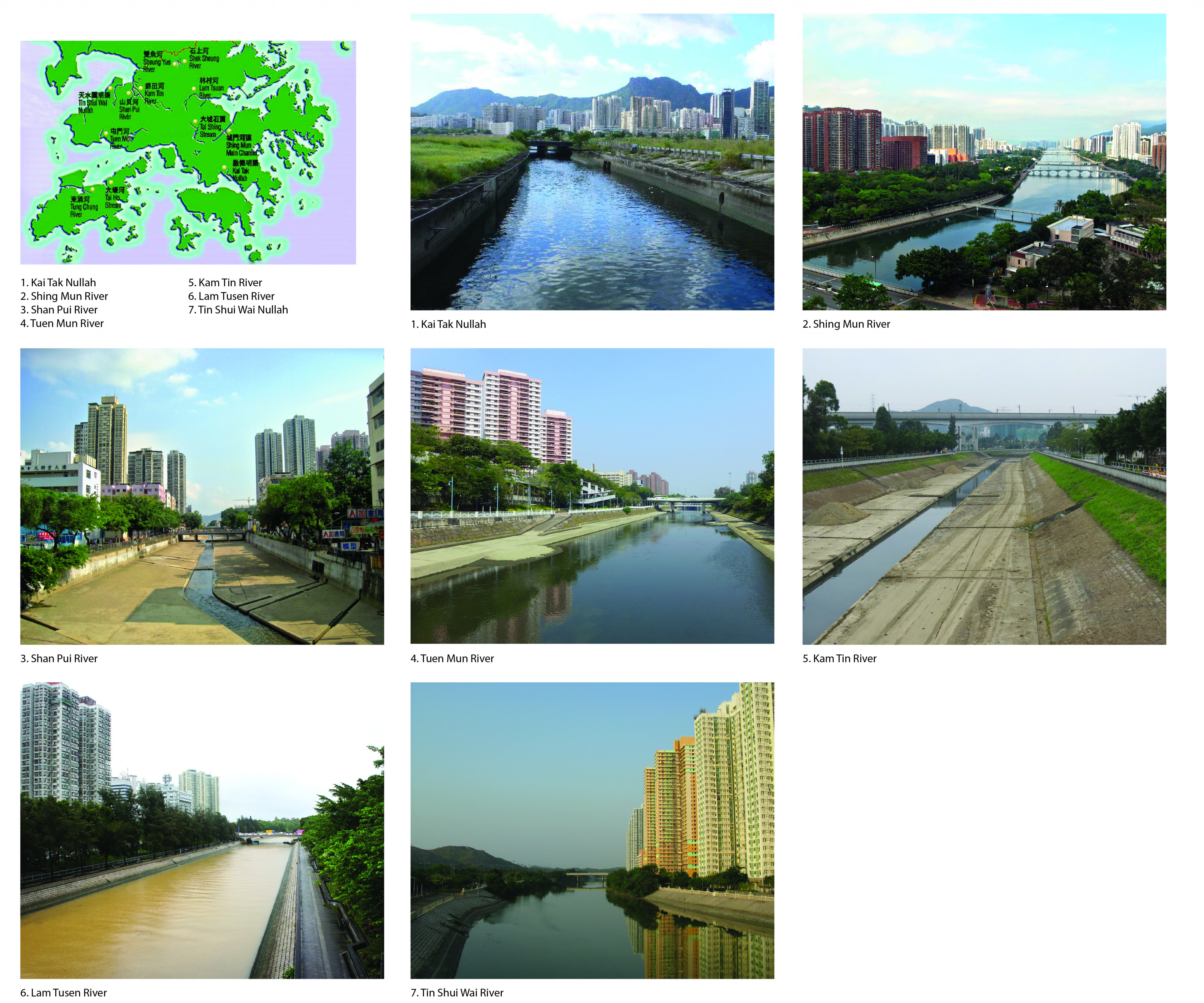
Water Infrastructure plays an important role in the city development. It does not only drain the waste water out, but more importantly is to prevent water flooding. Therefore drainage channel will take up many valuable space in the urban fabric.
Hong Kong is consider as one of the densest cities around the world, we are not only facing the issue of not enough housing, and also the issue of not enough public space. However, these existing concrete channels take up a lot of the urban space, and they also consider as abandoned space in the community due to the disgusting smell and unpleasant sight. However, I can see there are many undeveloped potentials in redefine and readopt the space of the existing concrete channel.
In the upcoming thesis project, I would be interested in redefine and readopt abandoned space of the existing concrete channel that is located in city center of Yuan Long. Since the city of Yuan Long is always crowded with people and cars, there is a need for expanding the public space and create a direct circulation through the city for the local from the MTR station. Therefore this project will not be only focusing on enhancing the surrounding area, but also inputting different functions into the abandon space, hoping to solve the problem of lack of public space.
HOW?
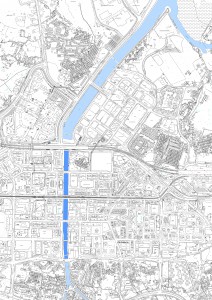 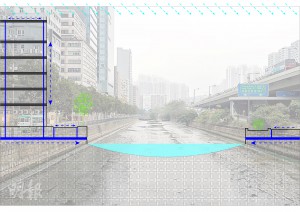
By understanding the negative impacts that brings toward the community from the existing drainage channel; this thesis project will explore those issues, and hopes to come up with solutions that does not only imply to the current site, but to all the different locations facing with the same issues currently.
BIBLIOGRAPHY:
Bibliography 00: Theory: Banham, Reyner. Megastructure: Urban Futures of the Recent past. New York: Harper and Row, 1976. Print.
Bibliography 01: Theory: Mostafavi, Mohsen, and Gareth Doherty. Ecological Urbanism. Baden, Switzerland: Lars Müller, 2010. Print.
Bibliography 02: Techniques: Prominski, Martin. River, Space, Design: Planning Strategies, Methods and Projects for Urban Streams. Basel: Birkhauser, 2012. Print.
Bibliography 03: Techniques: Yazdanfar, Zeinab, and Ashok Sharma. “Urban Drainage System Planning and Design – Challenges with Climate Change and Urbanization: A Review.” Water Science & Technology 72.2 (2015): 165. Web.
Bibliography 04: Current related project: Dreiseitl, Herbert. Recent Waterscapes: Planning, Building and Designing with Water. 3rd Rev. and Expanded ed. Basel: Birhauser, 2009. Print.
Bibliography 05: Current related project: Chung, Jin-Hyuk, Kee Yeon Hwang, and Yun Kyung Bae. “The Loss of Road Capacity and Self-compliance: Lessons from the Cheonggyecheon Stream Restoration.” Transport Policy 21 (2012): 165-78. Web.
Bibliography 06: Current related project: David, Joshua, and Robert Hammond. High Line: The inside Story of New York City’s Park in the Sky. New York: Farrar, Straus and Giroux, 2011. Print.
|